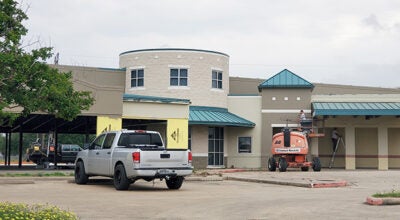Hurricane season not over, be prepared
Published 5:28 pm Monday, August 17, 2015
This year’s hurricane season, which began June 1, has been a slow one with three named storms but coastal residents still need to be prepared as the height of the season approaches.
“We are concerned about the safety of every Texan during hurricane season,” Mark Hanna, spokesman for the Insurance Council of Texas, said. “Even if a hurricane in the Gulf of Mexico is only a ‘Category 2’ coastal residents should still make sure they’re prepared to protect their property and evacuate if needed. Texas homeowners and businesses who have been through a hurricane can tell you how devastating the storms can be.”
The last storm to strike Texas was Hurricane Ike in 2008 — a Category 2 hurricane with winds ranging from 96 to 110 mph. Ike claimed more than 100 lives and completely wiped 3,000 homes and businesses off the Bolivar Peninsula. Extensive damage was also experienced in Bridge City in Orange County where almost every home received damage.
Roger Erickson, warning coordination meteorologist with the National Weather Service-Lake Charles, said El Nino put a damper on this year’s hurricane season.
The problem, he added, is the possibility of a quick strike hurricane. For example, Hurricane Humberto which struck High Island on Sept. 13, 2007, was a minimal storm with winds of 85 mph. The storm formed and intensified faster than any other hurricane on record before making landfall.
“It was a quick strike on the back of a cold front,” Erickson said.
The minimal Hurricane Humberto caused for $$30 million in losses.
Currently there is an area of low pressure located several hundred miles southwest of the Cape Verde Islands that shows signs of organization. While the area is still too far out to accurately predict formation and path, Erickson said the area is not a threat anytime soon if at all.
El Nino will have an effect on the winter though.
“With El Nino we typically colder, wetter winters,” he said. “The typical El Nino pattern is for stormy weather and cooler temps with a higher risk of ice storms. From our perspective, there is more to talk about later for the long range.”
Manuel Villarreal, Texas Windstorm Insurance Association ombudsman, works on education and outreach to policyholders in 14 counties. Performance-wise, things have gotten better when filing claims, he said. For example, a hailstorm that struck Beaumont on April 27 resulted in 2,294 new claims; many of those claims were finalized within 12.3 days.
“The fact that a majority of those claims were closed shows a lot about TWIA management.”
In related news, changes are coming for the Texas Windstorm Insurance Association.
Senate Bill 900, also known as the Windstorm Reform Bill, affects the way TWIA is funded, composition of the boards and programs to reduce the total amount of policies TWIA has.
Mark Hanna, with the Insurance Council of Texas, explained that by Oct. 1, a new TWIA board will be appointed consisting of three insurer representatives, three coastal representatives and three non-costal representatives.
SB 900 also changed TWIA’s funding structure requiring TWIA to fund, at minimum, a 100-year-storm season which has been accomplished, according to information from TWIA.
The bill requires TWIA to sustain this level of funding in future years, using the following sources: TWIA premiums and the Catastrophe Reserve Trust Fund (CRTF), a combination of $1 billion in company assessments and $1 billion in bonds repaid first by TWIA policyholders and if necessary, by all coastal policyholders and sufficient reinsurance or other risk financing to achieve the 100-year storm season, according to their website.





